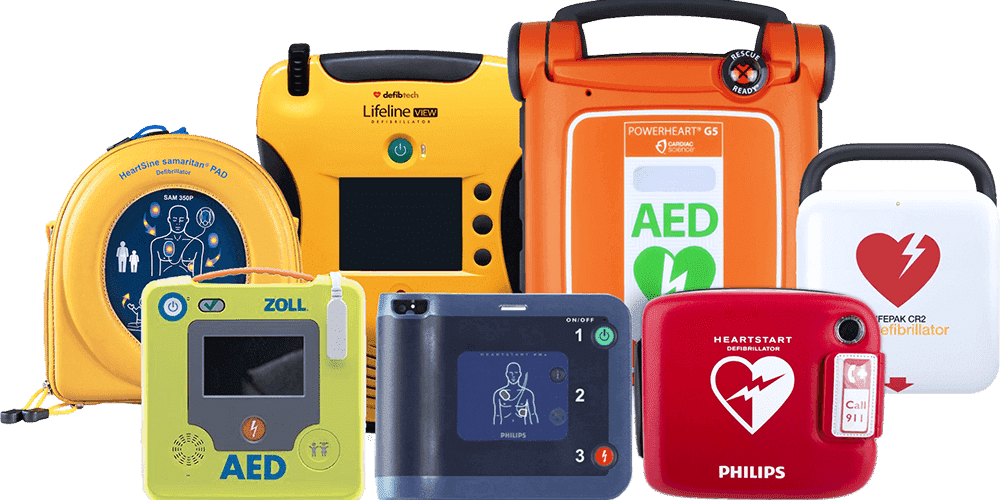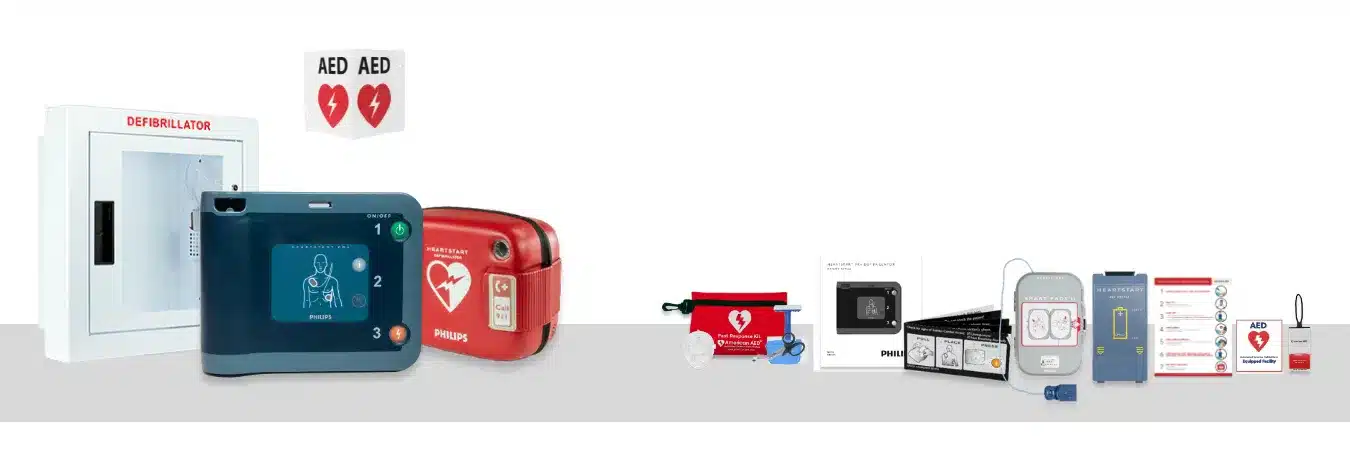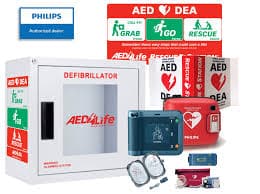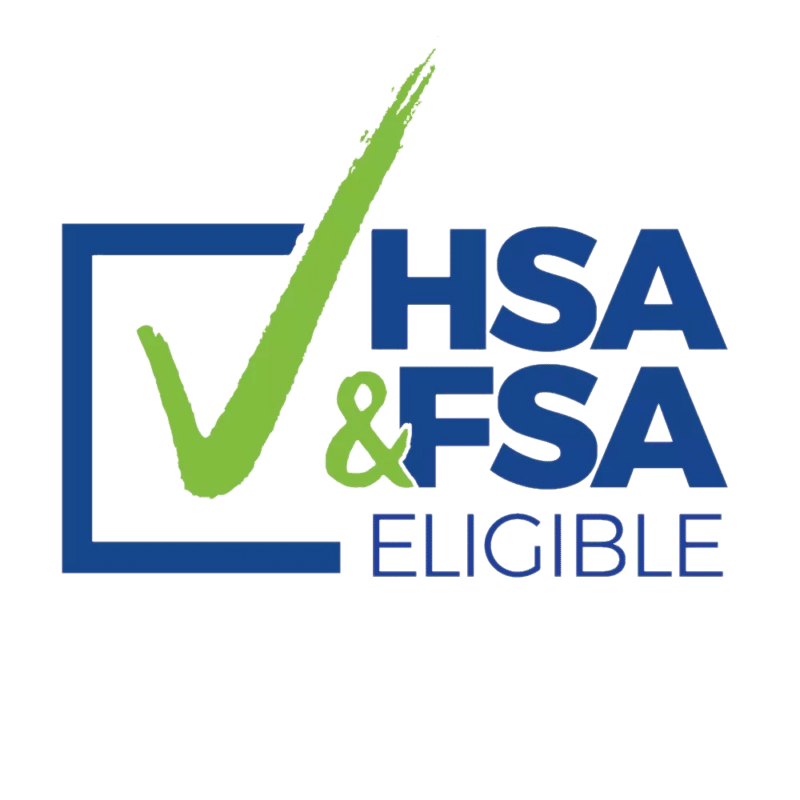No products in the cart.
AED's
How to Deliver a Pediatric Shock with the Philips HeartStart FRx Pediatric Key
When a child experiences sudden cardiac arrest, it’s a medical emergency that requires immediate intervention to improve their chances of survival. One of the most effective interventions in these situations is the use of an Automated External Defibrillator (AED). The Philips HeartStart FRx AED is a reliable and user-friendly device designed to treat sudden cardiac arrest in both adults and children. However, in pediatric cases, it’s essential to adjust the device’s settings to deliver the appropriate shock dose for a child’s smaller body. This is where the Philips HeartStart FRx Pediatric Key comes into play.
In this article, we will walk through how to use the Philips HeartStart FRx Pediatric Key to deliver a pediatric shock, ensuring the correct energy dose is used and guiding you through each step of the process.
What Is the Philips HeartStart FRx AED?

The Philips HeartStart FRx AED is a portable, user-friendly defibrillator designed for both professional rescuers and bystanders. It is equipped with intuitive voice prompts, clear visual instructions, and features that make it easy to use during a cardiac emergency. The HeartStart FRx is versatile and can be used on both adults and children with the appropriate accessories.
For adults, the device uses a standard shock energy of 150 joules. However, for pediatric patients, it is essential to adjust the shock energy to prevent over-delivering electrical energy, which can be harmful to a child’s smaller body. The Philips HeartStart FRx Pediatric Key helps to ensure the device delivers the correct energy dose for children.
What Is the Pediatric Key?
The Pediatric Key is a small, disposable accessory designed specifically for pediatric use. When inserted into the HeartStart FRx AED, the key alters the defibrillator’s settings so it will deliver a reduced shock energy level of 50 joules—more appropriate for children under 8 years old or those who weigh less than 55 pounds (25 kg).
This adjustment is important because children have smaller, more delicate heart tissues compared to adults, and administering a shock with too much energy could cause damage. The Pediatric Key helps ensure the defibrillator is calibrated to the proper level for pediatric resuscitation.
How to Use the Philips HeartStart FRx Pediatric Key
Here’s a step-by-step guide on how to use the Philips HeartStart FRx AED with the Pediatric Key to deliver a pediatric shock.
Assess the Situation
- Check for responsiveness: If you find an unresponsive child, gently tap the child and shout their name. If the child does not respond, proceed with assessing their breathing.
- Call for help: If the child is not breathing or not breathing normally, call 911 or emergency services immediately. If possible, have someone else call while you begin CPR.
Turn on the Philips HeartStart FRx AED
- Press the green “ON/OFF” button on the AED to power it on. The device will begin to provide verbal instructions immediately to guide you through the process.
- Make sure to stay calm and listen carefully to the voice prompts as the machine will guide you step by step.
Insert the Pediatric Key
- Locate the Pediatric Key: The Pediatric Key is a small, plastic key that comes with the Philips HeartStart FRx AED as an accessory. It is typically stored in a compartment within the AED carrying case.
- Insert the Key: Insert the Pediatric Key into the key port on the side of the Philips HeartStart FRx AED. This will trigger the device to switch to the appropriate settings for pediatric use.
- You will know the Pediatric Key has been correctly inserted when the AED automatically adjusts its settings and prompts you with instructions for pediatric use.
Prepare and Apply the Pediatric Pads
- Open the AED Pads: Remove the pediatric electrode pads from their packaging. The pads are specifically designed for use on children and will have clear instructions for placement.
- Apply the Pads:
- For infants and small children (under 1 year or under 55 pounds), place one electrode pad on the front of the chest (just below the nipple line) and the other on the back, between the shoulder blades. This “anterior-posterior” placement is recommended for young children to reduce the risk of injury and improve the chances of effective shock delivery.
- For children over 1 year old, the standard anterior-lateral pad placement (one pad on the chest and the other on the upper left side of the chest) can be used if the child is large enough to fit the pads.
Let the AED Analyze the Heart Rhythm
- Stay Clear: Once the pads are attached, the AED will automatically analyze the child’s heart rhythm. Make sure that no one is touching the child or the AED at this time, as the device will instruct the shock only if necessary.
- AED Instructions: If the AED detects a shockable rhythm, it will prompt you to deliver a shock. The device will announce “Shock advised,” and the screen will display the word “SHOCK.”
Deliver the Shock
- Press the Shock Button: If prompted by the AED, press the orange shock button. The device will deliver the shock at the reduced energy level of 50 joules, which is safe for pediatric patients.
- Ensure Everyone Is Clear: Always ensure that no one is touching the child during the shock delivery to avoid accidental harm.
Resume CPR Immediately
- After the shock has been delivered, the AED will prompt you to resume CPR immediately. Begin chest compressions at a rate of 100-120 per minute and perform 30 compressions followed by 2 rescue breaths.
- Continue CPR until emergency medical personnel arrive or the child begins to show signs of life, such as breathing or movement.
Follow the AED’s Prompts
- The Philips HeartStart FRx AED will continue to guide you through the next steps. It may prompt you to deliver additional shocks, depending on the child’s condition and rhythm.
Why Is the Pediatric Key Important?
The Pediatric Key is a critical feature for ensuring that the Philips HeartStart FRx AED is delivering the appropriate energy for young children. Administering too much energy to a child during defibrillation could cause severe tissue damage and is unlikely to restore normal heart rhythm. The Pediatric Key helps adjust the AED’s settings, ensuring the shock is tailored to the child’s size and age, improving the chances of survival and minimizing the risk of harm.
Conclusion

The Philips HeartStart FRx Pediatric Key is an essential tool for anyone using the Philips HeartStart FRx AED to assist children in cardiac arrest. By reducing the shock energy to 50 joules, it ensures that pediatric patients receive the correct dose of electricity to increase their chances of survival without the risk of over-exposure. Knowing how to use this key, along with the AED’s voice prompts and pediatric pads, can make a critical difference in the outcome of a child’s medical emergency. Always remember, the faster the intervention, the better the chances of recovery. So, having the knowledge and confidence to use an AED in pediatric emergencies is key to saving lives.






